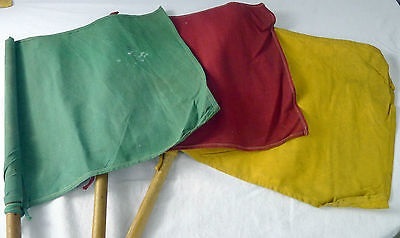|
PT-76 Queue: M4A3E2 Jumbo Sherman, M4A2 Sherman in the Red Army, T-54, T-44 prototypes, T-44 prototypes second round, T-44 production, Soviet HEAT anti-tank grenades, T-34-85M, Myths of Soviet tank building: interbellum tanks, Light Tank M24, German anti-tank rifles, PT-76 modernizations, ISU-122 front line impressions, German additional tank protection (zimmerit, schurzen, track links), Winter and swamp tracks, Paper light tank destroyers, Allied intel on the Maus , Summary of French interbellum tank development, Medium Tank T20, Medium Tank T23, Myths of Soviet tank building, GMC M10, Tiger II predecessors, Pz.Kpfw.IV Ausf.H-J,IS-6, SU-101/SU-102/Uralmash-1, Centurion Mk.I, SU-100 front line impressions, IS-2 front line impressions, Myths of Soviet tank building: early Great Patriotic War, Influence of the T-34 on German tank building, Medium Tank T25, Heavy Tank T26/T26E1/T26E3, Career of Harry Knox, GMC M36, Geschützwagen Tiger für 17cm K72 (Sf), Early Early Soviet tank development (MS-1, AN Teplokhod), Career of Semyon Aleksandrovich Ginzburg, AT-1, Object 140, SU-76 frontline impressions, Creation of the IS-3, IS-6, SU-5, Myths of Soviet tank building: 1943-44, IS-2 post-war modifications, Myths of Soviet tank building: end of the Great Patriotic War, Medium Tank T6, RPG-1, Lahti L-39, T-80 T-62 T-64 T-72A comparative trials, American tank building plans post-war, German tanks for 1946, HMC M7 Priest, GMC M12, GMC M40/M43, ISU-152, AMR 35 ZT, Soviet post-war tank building plans, T-100Y and SU-14-1, Object 430, Pz.Kpfw.35(t), T-60 tanks in combat, SU-76M modernizations, Panhard 178 Available for request (others' articles):  Shashmurin's career BT-7M/A-8 trials Voroshilovets tractor trials NEW  Light Tank T37 Light Tank T41 Medium Tank M46 Modernization of the M48 to the M60 standard 15 cm sFH 13/1 (Sf) Oerlikon and Solothurn anti-tank rifles German tank building trends at the end of WW2 Pz.Kpfw.III/IV Evolution of German tank observation devices
|
|
|
|

|
| # ? Jun 11, 2024 15:57 |
|
Ensign Expendable posted:The SU-152/ISU-152 I guess, but even then those were gun-howitzers rather than plain howitzers. The problem with hitting a tank with a howitzer is that it's hard to do over a long range since the trajectory is so tall and the low muzzle velocity makes it harder to lead your shot. Would they even have had sights suitable for engaging a tank?
|
|
|
|
Phanatic posted:Would they even have had sights suitable for engaging a tank? Your sights don't change. Its all a matter of distance and the characteristics of a particular shell.
|
|
|
|
VanSandman posted:How did you fight at night anyway? Wouldn't the enemy bomber be running without lights? If there's no moon or it's cloudy, do you even have a chance of finding your target well enough to hit them even with radar? Someone posted an article in a prior thread about it. Some guy had done a bunch of research on the subject. As they said earlier, there was a lot of new ideas, then counters, then counter-counters, up until the US had the bright idea of overwhelming the air defense network with thousand-bomber raids. The Germans were using ground control to vector night fighters to their targets, so the Brits had German speakers get on the same frequency and give them bad directions and generally poo poo up the channel. The Germans (assuming that they were on the bombers) switched to women directors, but the British simply found German speaking women and kept it up.
|
|
|
|
Alchenar posted:If French tanks in 1940 had 5 person crews and a tactical radio net it probably doesn't change anything fundamental in how the Battle of France goes. Agreed, yes.
|
|
|
|
Alhazred posted:Before radars were a thing people also had to listen after planes: Wow early hearing aids were kind of bulky
|
|
|
|
didn't ships signal to each other via semaphore when radios weren't yet invented. Couldn't you do something similar with tanks.
|
|
|
|
VanSandman posted:How did you fight at night anyway? Wouldn't the enemy bomber be running without lights? If there's no moon or it's cloudy, do you even have a chance of finding your target well enough to hit them even with radar? One (relatively) technologically simple method is to have searchlights on the ground that illuminate bombers in the sky, allowing either night fighters or AAA to visually target them.
|
|
|
|
gradenko_2000 posted:didn't ships signal to each other via semaphore when radios weren't yet invented. Couldn't you do something similar with tanks. Ships have more crew to handle signalling and doing things like semaphore is inconvenient on a tank unless you built a semaphore mast on top of the turret?
|
|
|
|
Nenonen posted:Ships have more crew to handle signalling and doing things like semaphore is inconvenient on a tank unless you built a semaphore mast on top of the turret? Also on land there's more elevations, foliage, and general things blocking direct line of sight- the use of flags and hand signals basically require tanks to be very close in many circumstances that aren't just a wide open field. It also requires a crewman to be staring at the platoon leader- not a huge problem on a ship but you don't have so many of those, ad the nature of ww2 tanks limited visibility in that regard. Soviet armor in the early war suffered for a lack of radio comms equipment tactically.
|
|
|
|
The Semaphore also quickly becomes really difficult to use once the actual battle starts because 
|
|
|
|
Trin Tragula posted:Out of interest, were they actually calling it "Roeselare"? Only in the last war, the British forces used the French names for everything that had one, even in Flanders, and so it was always "Roulers". https://en.wikipedia.org/wiki/Regensburg https://en.wikipedia.org/wiki/Pre%C5%A1ov HEY GUNS fucked around with this message at 12:12 on Dec 1, 2020 |
|
|
|
gradenko_2000 posted:tangentially related but the book I'm reading on the development of the IJN just got done covering Tsushima and apparently the Japanese shells hardly ever penetrated Russian belt armor because they packed the shells with lots of explosive at the expense of armor piercing capability, but it did blow up superstructure, set paint on fire, kill personnel with shrapnel, and basically just wrecked the people-spaces of the ships to disable them. I remember reading a first person account of the battle by a Russian naval officer and his take on it was that fuses were unreliable for both sides at the time; they were intended to let the shell penetrate and then go off, but a lot of the time they didn't trigger at all. The Japanese noticed this at the Battle of the Yellow Sea and following that tuned their fuses to be on a hair trigger, meaning they were certain to go off but unlikely to penetrate before they did so (and, also, more likely to go off prematurely; one Japanese battleship did indeed blow up its own turret during the battle). The Russians, meanwhile, were firing duds half the time, which is one reason the battle was so one sided.
|
|
|
|
I hate going to Germany because it means I will also have to stop at Saksa, Tyskland, Deutschland and Allemagne, and then I will have to buy souvenirs from all of them!
|
|
|
|
Alchenar posted:Actually the opposite. The fighters at your airfield have to go 4km straight up to fight the bombers bombing your airfield. If the fighters stationed at Biggin Hill want to protect their airfield from being bombed, they have to take off while the enemy raid is still over the Channel. And if they gently caress up their timing or fall for a feint then they'll be on the ground refuelling. I mean, if this is happening on the reg i.e. you know the enemy is specifically targetting your airfields, I would expect there to be a CAP at all times just like with a carrier, not everyone just sitting around on the ground waiting to get bombed.
|
|
|
|
feedmegin posted:I mean, if this is happening on the reg i.e. you know the enemy is specifically targetting your airfields, I would expect there to be a CAP at all times just like with a carrier, not everyone just sitting around on the ground waiting to get bombed. I was thinking about addressing this - it's not practical (and that's why it didn't happen in reality unless you are a carrier and we'll talk about that). A spitfire has fuel for 1.5 hours of cruise and 15 minutes of fighting. Counting time to cycle up to combat altitude and back down that means that an effective CAP has to be swapping planes around once an hour. So to maintain an effective cap your (full strength assumption!) squadron can at best effort keep 4 planes circling the airfield, burning fuel, wearing out the engines and utterly exhausting everyone. And your squadron is fully committed to this task and can't do anything else. And for all that your 4 plane CAP is almost certainly going to be outmatched by the bomber escort. Carriers can get away with doing a CAP because the whole point of a carrier is that by default it's the most important thing to defend in 1000km so you do commit your entire fighter complement to keeping it safe if you aren't doing offensive ops.
|
|
|
|
Don't forget your maintenance hours associated with those flight hours.
|
|
|
|
Alternatively you just keep the scramble squadron ready so at a minimum they're off the ground when the bombs land, and everything else is dispersed into parking locations with protective earthworks and a whole bunch of AAA emplacements who can be there all day.
|
|
|
|
Alchenar posted:I was thinking about addressing this - it's not practical (and that's why it didn't happen in reality unless you are a carrier and we'll talk about that). A spitfire has fuel for 1.5 hours of cruise and 15 minutes of fighting. Counting time to cycle up to combat altitude and back down that means that an effective CAP has to be swapping planes around once an hour. When carriers are near a friendly coast or docked, are land-based aircraft used for protection? What does that doctrine look like?
|
|
|
|
VanSandman posted:When carriers are near a friendly coast or docked, are land-based aircraft used for protection? What does that doctrine look like? Two separate branches, so they are still doing their normally assigned tasks for CAP, Reconnaissance, etc. You just have more coverage.
|
|
|
|
VanSandman posted:When carriers are near a friendly coast or docked, are land-based aircraft used for protection? What does that doctrine look like? if I'm not mistaken a carrier that's docked isn't going to be conducting flight ops, because it's not going to be moving fast enough (into the wind) to launch aircraft
|
|
|
|
gradenko_2000 posted:if I'm not mistaken a carrier that's docked isn't going to be conducting flight ops, because it's not going to be moving fast enough (into the wind) to launch aircraft Yep. But the simpler answer if we are talking about the WW2 Pacific war is that a carrier that's docked is out of range of enemy air attack.
|
|
|
|
Alchenar posted:Yep. But the simpler answer if we are talking about the WW2 Pacific war is that a carrier that's docked is out of range of enemy air attack. Did they know that at the time, though? I mean, Pearl Harbor happened after all.
|
|
|
|
feedmegin posted:I remember reading a first person account of the battle by a Russian naval officer and his take on it was that fuses were unreliable for both sides at the time; they were intended to let the shell penetrate and then go off, but a lot of the time they didn't trigger at all. The Japanese noticed this at the Battle of the Yellow Sea and following that tuned their fuses to be on a hair trigger, meaning they were certain to go off but unlikely to penetrate before they did so (and, also, more likely to go off prematurely; one Japanese battleship did indeed blow up its own turret during the battle). The Russians, meanwhile, were firing duds half the time, which is one reason the battle was so one sided. Also the Russians had traversed 20,000 miles from Saint Pete, and the British refused to let their ammo ships through the Suez canal, so they were using powder and shells that hadn't been touched since the Battle of Dogger banks, where they repulsed a few British fishing boats.
|
|
|
|
This is the expedition that eventually got boarded by venomous snakes and at least one alligator when it reached Madagascar, right? Sounds about on brand for their luck.
|
|
|
|
Fangz posted:Did they know that at the time, though? I mean, Pearl Harbor happened after all. Catching ships in port without proper protection was definitely bad for said ships, but it was really hard to do. Pearl Harbor and Royal Oak were both due to really halfassed/incompetent security measures; Mers el-Kebir was something kind of different. Marat and Tirpitz both suffered from a distinct lack of air superiority or even reasonable defensive counter air. I can't remember any other prominent port attacks off the top of my head. Anyway, I feel like some scenario where either Kido Butai or TF38/58 sails up to a major enemy port and launches an attack when the enemy was properly prepared would've been very bad for either fleet at pretty much any time during the war.
|
|
|
|
I have some pike related questions: What wood was used? Was it a strategic resource like yew for longbows or oak for ship masts? How were they made? I can't imagine they had a 15 foot long lathe. How thick were they? I know HEY GUNS mentioned that reenactors use different dimensions than real pikes, why? Did different armies use different configurations? Are the pike staves cylindrical all along? Do they taper? Do they have buttplates like smaller spears?
|
|
|
|
bewbies posted:Catching ships in port without proper protection was definitely bad for said ships, but it was really hard to do. Pearl Harbor and Royal Oak were both due to really halfassed/incompetent security measures; Mers el-Kebir was something kind of different. Marat and Tirpitz both suffered from a distinct lack of air superiority or even reasonable defensive counter air. I can't remember any other prominent port attacks off the top of my head. Taranto was one, Truk another.
|
|
|
|
gradenko_2000 posted:didn't ships signal to each other via semaphore when radios weren't yet invented. Couldn't you do something similar with tanks. Nenonen posted:Ships have more crew to handle signalling and doing things like semaphore is inconvenient on a tank unless you built a semaphore mast on top of the turret? I mentioned earlier that tanks DO use flags, but in a very, very limited capacity. When I was in each tank had a red, yellow and green flag. These were mostly used in peacetime as range safety flags (i.e., red=vehicle is shooting, do not approach) but they were also used occasionally to send signals in training exercises when we were practicing maintaining radio silence. A quick check of Google for an image shows that the same thing has been around since WWII:  But they're very limited in what information they can transmit. I'm sure that there were some sort of official signal codes we had to memorize at some point to supplement the usual hand-and-arm signals, but in practice these signals were very limited. "Stop," "go," and pointing in the direction that you want the other vehicle to go are about it in real situations. This isn't really enough to get any sort of sophisticated tactical maneuvers out of. You can't really communicate something like "move to the hull-down behind the trees to the west, then fire on my signal, then back away to the north" with hand gestures from a moving AFV. One thing to consider about battleships with semaphore and signal flags is that naval combat of that era was much slower. Ships would have several minutes or more to send signals and execute maneuvers over the course of similar lengths of time. Tank combat is a bit more immediate. (I.e., "Platoon, fire on my command - now!")
|
|
|
|
Nebakenezzer posted:Just going by Shattered Sword, explosions near the Japanese carriers at Midway could cause significant damage - cause pipes to burst, damage steering gear, what have you. I don't know how much this translates to armored warships, especially those that were built with the knowledge carrier dive bombers could sling 1000 lb bombs. I suspect though unarmored bomb hits would gently caress up a battleship's ability to fight, if not get lucky and break something bad. Was not the Prince of Wales' fatal hit a near miss that fragged a propeller shaft and then sent a surge of water into one of the boiler spaces? Near misses can gently caress up a battleship pretty bad too, hydrostatic shock being what it is and all.
|
|
|
|
Cessna posted:I mentioned earlier that tanks DO use flags, but in a very, very limited capacity. When I was in each tank had a red, yellow and green flag. These were mostly used in peacetime as range safety flags (i.e., red=vehicle is shooting, do not approach) but they were also used occasionally to send signals in training exercises when we were practicing maintaining radio silence. A quick check of Google for an image shows that the same thing has been around since WWII: It's obviously impractical, but if you were some kind of crazy person you could make a system of flags that was basically hexadecimal or something and communicate any arbitrarily complex message. It would just take forever, require really specific visibility and everyone has to be able to read your super complex coding language. So yeah maybe we stick to radios.
|
|
|
|
Xiahou Dun posted:It's obviously impractical, but if you were some kind of crazy person you could make a system of flags that was basically hexadecimal or something and communicate any arbitrarily complex message. It would just take forever, require really specific visibility and everyone has to be able to read your super complex coding language. Hey, boot, open the hatch and transmit this: 4d 6f 76 65 20 74 6f 20 74 68 65 20 68 75 6c 6c 2d 64 6f 77 6e 20 62 65 68 69 6e 64 20 74 68 65 20 74 72 65 65 73 20 74 6f 20 74 68 65 20 77 65 73 74 2c 20 74 68 65 6e 20 66 69 72 65 20 6f 6e 20 6d 79 20 73 69 67 6e 61 6c 2c 20 74 68 65 6e 20 62 61 63 6b 20 61 77 61 79 20 74 6f 20 74 68 65 20 6e 6f 72 74 68 2e
|
|
|
|
Cessna posted:Hey, boot, open the hatch and transmit this: I did specify it was a bad idea and you'd have to be insane. But you have to admit it's funny though.
|
|
|
|
Xiahou Dun posted:But you have to admit it's funny though. I just like the idea of some sort of raised semaphore platform on top of a tank bouncing through rough terrain with a crewman on top flapping away with flags. 
|
|
|
|
Cessna posted:Hey, boot, open the hatch and transmit this: Sure thing, just give me a minute to compute the checksum
|
|
|
|
Cessna posted:I just like the idea of some sort of raised semaphore platform on top of a tank bouncing through rough terrain with a crewman on top flapping away with flags. I am all for that as that gets us one step closer to land ships.
|
|
|
|
Cessna posted:Hey, boot, open the hatch and transmit this: 6e 65 77 20 74 61 6e 6b 20 77 68 6f 20 64 69 73
|
|
|
|
Episode 0005 is now up, and we're tackling a modern day aircraft, the Embraer (Super) Tucano. This one was a lot of fun to research, with surprisingly little coverage in literature. https://www.youtube.com/watch?v=uuXXLxd9_1k As always, questions, comments, suggestions are greatly appreciated.
|
|
|
|
Cessna posted:
And back when tanks moved at sub-warship speeds and didn't have wireless they did use semaphore: 
|
|
|
|

|
| # ? Jun 11, 2024 15:57 |
|
Alchenar posted:So to maintain an effective cap your (full strength assumption!) squadron can at best effort keep 4 planes circling the airfield, burning fuel, wearing out the engines and utterly exhausting everyone. And your squadron is fully committed to this task and can't do anything else. And for all that your 4 plane CAP is almost certainly going to be outmatched by the bomber escort. Well, in this situation we were talking about the time when bombers could far out range fighter aircraft., so there wouldn't be any bomber escort.
|
|
|













 Yes, it's like a lava lamp.
Yes, it's like a lava lamp.






















